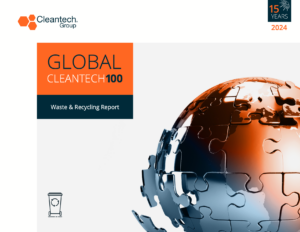Opportunities in the Green Building Landscape: IMI Hydronic’s Journey
In the quest for sustainable growth, IMI Hydronic Engineering (IMI HE), a leading player in the heating and cooling industry, embarked on a quest to identify new business opportunities in the field of smart green buildings. The company partnered with Cleantech Group to conduct a landscape and technology scan aimed at better understanding market trends, drivers, and challenges of potential investment and growth areas.
Cleantech Group analyzed the innovation landscape and competitive ecosystem in a number of adjacent markets, including the residential smart controls market where IMI-Hydronic eventually acquired a UK-based smart thermostatic control manufacturer.
The Journey Leading to the Acquisition
IMI HE specializes in the control of pressure, quality and the flow of water in heating and cooling systems. With a reputation for innovation and a continuously expanding product portfolio, their approach of “breakthrough engineering for a better world” has helped the company stay ahead of the curve and continue to grow in an evolving market.
Market trends in green buildings include an increased focus on sustainable construction and buildings, and emerging opportunities for grid-connected buildings to act as ‘flexibility’ assets in the wider electricity system.
Key Findings
The most sustainable buildings combine sustainable operations with low-embodied carbon materials.
- While the focus of sustainable construction and green buildings has traditionally centered on the operational phase of buildings, emphasis has now shifted to embodied carbon, which can account for up to 50% of a building’s lifecycle emissions, in light of more ambitious decarbonization and net-zero goals.
- HVAC (Heating, Ventilation, and Air Conditioning) accounts for more than 35% of a building’s energy use, making HVAC optimization the low-hanging fruit in meeting building energy performance regulations and corporate emissions reduction strategies.
- Innovators offer a combination of software and hardware solutions for buildings, with or without existing building management systems (BMS), which can result in up to 50% energy savings (read more in Cleantech Group’s Spotlight, Intelligent HVAC).
Buildings have a significant role in the electricity system of the future.
- Grid interactivity is experiencing growth, with intelligent HVAC systems playing a significant role in demand response.
- Grid-connected buildings can also provide ‘flexibility’ services to the network, feeding excess local electricity production back into the system, or using batteries and other local storage to shift consumption to off-peak times.
- This trend will continue as incentives to phase out fossil fuels continue to increase, leading to a corresponding rise in renewable capacity, which subsequently leads to an increase in the value of grid flexibility services.
- The APAC region is seeing the fastest growth in this area, while Europe and North America currently lead in integrating innovation.
Green Building Challenges
Nonetheless, the green building sector has yet to overcome certain challenges. For one, the construction industry is highly sensitive to economic conditions and supply chain disruptions, making it more difficult to trial or adopt innovative solutions. Connectivity retrofits may lead to costly installation and configuration. And in many regions, electricity markets are still not fully open to building-level flexibility trading.

The Results
Cleantech Group worked with IMI HE to explore business opportunities which solve problems for customers looking to improve the energy efficiency and sustainability of residential and commercial buildings. We analyzed the latest innovation trends in four specified areas of interest across N. America and Europe and identified likely future developments. We interviewed 16 startups and prioritized different areas according to IMI HE’s goals and particular strengths, to identify growth areas with the best fit for the business. IMI HE used these insights and recommendations to evaluate the strategic fit of potential M&A targets.
In November 2022, IMI HE made a significant move by acquiring Heatmiser UK, a premier smart thermostatic control manufacturer based in the UK, for £110 million. Heatmiser UK brings an innovative product and technology offering, outstanding customer service, well-established brand positioning, and an impressive growth trajectory. IMI HE expects the acquisition to enhance their solution in the smart green building market and allow the company to bring Heatmiser’s expertise to Europe.
IMI HE remains actively engaged in the green building sector and is open to exploring new areas of business development to take advantage of the increasing demand for sustainable solutions, which help to save energy while maintaining a comfortable indoor climate.



